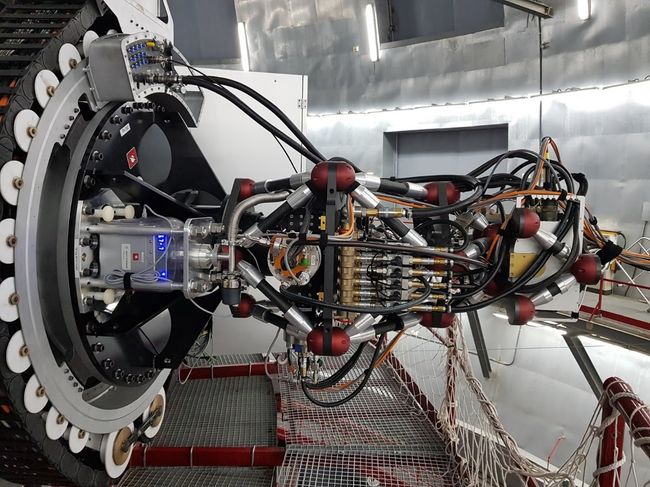
Titan Enterprises Proposes Solution to Cooling World’s Most Sensitive Astronomical Camera
SHEFFIELD, England, Jan. 3, 2020 — Titan Enterprises Ltd., an international manufacturer of flow meters, has proposed an optical flow sensor technology to monitor the flow of coolant to the world’s largest optical telescope, the 10.4-m Gran Telescopio Canarias (GTC).

HiPERCAM mounted on the GTC. Courtesy of Titan Enterprises.
After attempts to use turbine and ultrasonic flow sensors proved unsuccessful due to metallic film build-up on the propellers and microbubbles in the coolant of GTC’s hypersensitive astronomical camera, known as HiPERCAM, a team at Titan Enterprises proposed the Titan FT2, an optical flow sensor that uses an LED and photodiode and is impervious to the undesirable characteristics of the telescope’s cooling fluid.
The five light sensors used on GTC’s HiPERCAM, located on La Palma in the Canary Islands, are ultrasensitive charge-coupled devices (CCDs), which require cooling to 183 K (−90 °C) to minimize noise in the images. This cooling is achieved using very high performance thermoelectric coolers that in turn require a liquid coolant (a water-glycol mixture at 5 °C) to remove the heat they extract.
When the rotor spins in an FT2 optical flow sensor, the photodiode can detect the LED with a frequency proportional to the flow rate. When the rotor is static, the photodiode cannot see the LED, indicating no flow. Six FT2 optical flow sensors have recently passed tests in the University of Sheffield lab where the camera was built and are now on their way to La Palma for final commissioning on HiPERCAM.
For more information about HiPERCAM, visit www.vikdhillon.staff.shef.ac.uk/hipercam/index.html.
/Buyers_Guide/Titan_Enterprises_Ltd/c31278